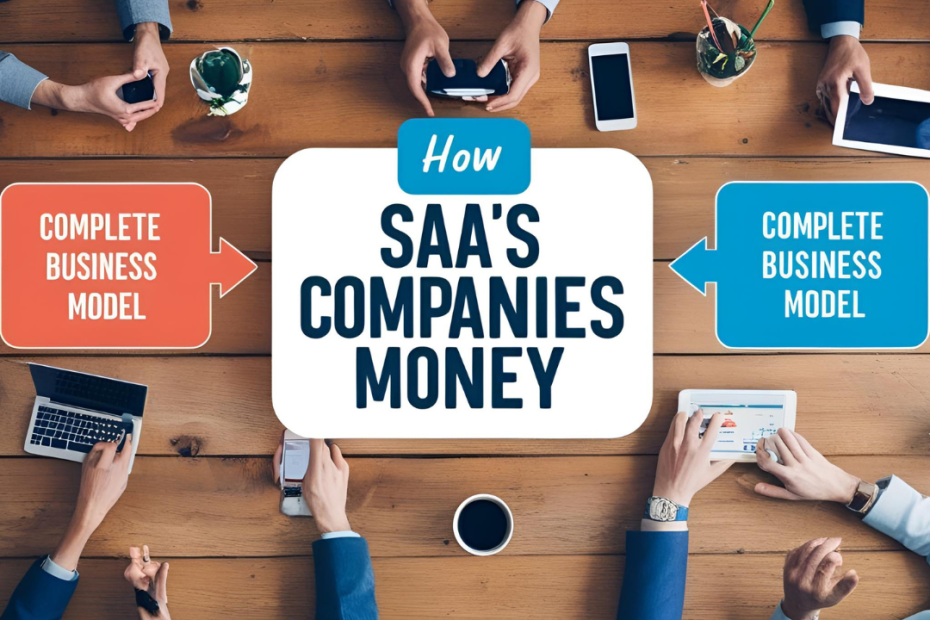Introduction
The Software as a Service (SaaS) industry has exploded over the last decade, becoming the backbone of digital transformation in businesses worldwide. By 2025, SaaS is no longer just a trend; it’s the standard. From startups to enterprise giants, companies are embracing SaaS solutions for their scalability, flexibility, and cost-efficiency. But how exactly do SaaS companies generate revenue? In this comprehensive guide, we’ll break down the various business models, revenue strategies, and success metrics that power the SaaS economy.
Table of Contents
- What is SaaS?
- Core SaaS Revenue Models
- Subscription-Based Pricing
- Freemium Model Strategy
- Pay-As-You-Go Billing
- Tiered Pricing Structures
- Usage-Based Pricing
- Enterprise Sales and Licensing
- Upselling, Cross-Selling, and Add-Ons
- Affiliate Marketing and Partnerships
- Consulting and Professional Services
- Advertising and Data Monetization
- Key Metrics for SaaS Success
- Challenges for SaaS Businesses in 2025
- Final Takeaways
- Meta Description
- SEO Keywords
- Blog Tags
What is SaaS?
SaaS stands for Software as a Service, a cloud computing model where software is delivered over the internet rather than installed locally. Users pay recurring fees, gaining access to updates, maintenance, and support without worrying about hosting infrastructure. SaaS enables companies to scale quickly and gives users flexibility, which explains its dominance in 2025.
Core SaaS Revenue Models
Unlike traditional software, SaaS revenue is based on recurring income rather than one-time sales. This model ensures predictable cash flows and stronger customer relationships. Let’s dive into the major revenue strategies:
Subscription-Based Pricing
The subscription model is the cornerstone of SaaS. Users pay monthly, quarterly, or annually to access the service.
Benefits:
- Predictable revenue streams
- Easier cash flow management
- Opportunity for upselling premium features
Examples: Salesforce, HubSpot, Netflix
Freemium Model Strategy
Freemium combines free basic services with paid upgrades. It attracts large audiences who can later be converted into paying customers.
Advantages:
- Low barrier to entry
- Broad user acquisition
- Natural funnel to premium plans
Examples: Dropbox, Grammarly, Canva
Pay-As-You-Go Billing
Also known as consumption-based pricing, customers pay based on actual usage rather than a fixed subscription.
Advantages:
- Highly flexible
- Great for startups or variable usage patterns
- Reduces initial commitment anxiety
Examples: Amazon Web Services (AWS), Twilio
Tiered Pricing Structures
Offering multiple pricing tiers is common. Each tier serves different business sizes and needs, maximizing revenue potential.
Structure:
- Basic: Limited features
- Professional: More features
- Enterprise: Custom solutions
Benefits:
- Increases ARPU (Average Revenue Per User)
- Allows segmentation
Examples: Zoom, FreshBooks, Adobe Creative Cloud
Usage-Based Pricing
Instead of flat fees, users pay per action—like per API call, per transaction, or per GB of storage.
Key Metrics:
- Number of users
- Data consumed
- Requests made
Examples: Snowflake, Datadog
Enterprise Sales and Licensing
Large-scale SaaS contracts cater to businesses needing custom integrations, premium support, or bulk licenses.
Features:
- High-value, long-term contracts
- Custom feature development
- Dedicated account managers
Examples: Microsoft Azure, SAP, Oracle Cloud
Upselling, Cross-Selling, and Add-Ons
Maximizing the customer lifetime value (CLTV) is crucial. Companies upsell advanced features and cross-sell complementary products.
Common Strategies:
- Offering CRM modules to project management customers
- Selling premium support or security add-ons
Examples: Shopify, Zendesk, Slack
Affiliate Marketing and Partnerships
Through strategic partnerships and affiliate programs, SaaS companies tap into new audiences without significant investment.
Benefits:
- Expand customer base
- Boost brand trust
- Cost-effective lead generation
Examples: HubSpot’s affiliate program, web hosting SaaS affiliations
Consulting and Professional Services
For complex SaaS tools, implementation, onboarding, and training are revenue streams.
Opportunities:
- Custom onboarding packages
- Training webinars
- Long-term consulting
Examples: ServiceNow, Salesforce Consulting Partners
Advertising and Data Monetization
Consumer-facing SaaS businesses sometimes monetize via advertisements or anonymized user data.
Revenue Streams:
- Display ads
- Sponsored content
- Selling analytics reports (with user consent)
Examples: Waze, Freemium task management apps
Key Metrics for SaaS Success
Tracking the right metrics is critical for growth and stability:
- MRR (Monthly Recurring Revenue): Predictable income
- ARR (Annual Recurring Revenue): Long-term revenue forecasts
- CAC (Customer Acquisition Cost): Cost to acquire a customer
- CLTV (Customer Lifetime Value): Total revenue from a customer over time
- Churn Rate: Percentage of customers lost
- NPS (Net Promoter Score): Customer satisfaction and loyalty
Challenges for SaaS Businesses in 2025
Despite the booming industry, SaaS companies face real hurdles:
- Skyrocketing customer acquisition costs
- Increased competition and saturation
- Churn management
- Global compliance and data privacy regulations
- Demand for seamless integration with AI and automation tools
Staying competitive requires relentless innovation, customer-centric focus, and agile adaptation.
Final Takeaways
SaaS monetization revolves around providing ongoing value to customers. Whether through subscriptions, upsells, professional services, or strategic partnerships, the emphasis is on building long-term customer relationships and maximizing lifetime value. Companies that prioritize flexibility, personalization, and security will continue to thrive well into the future.
